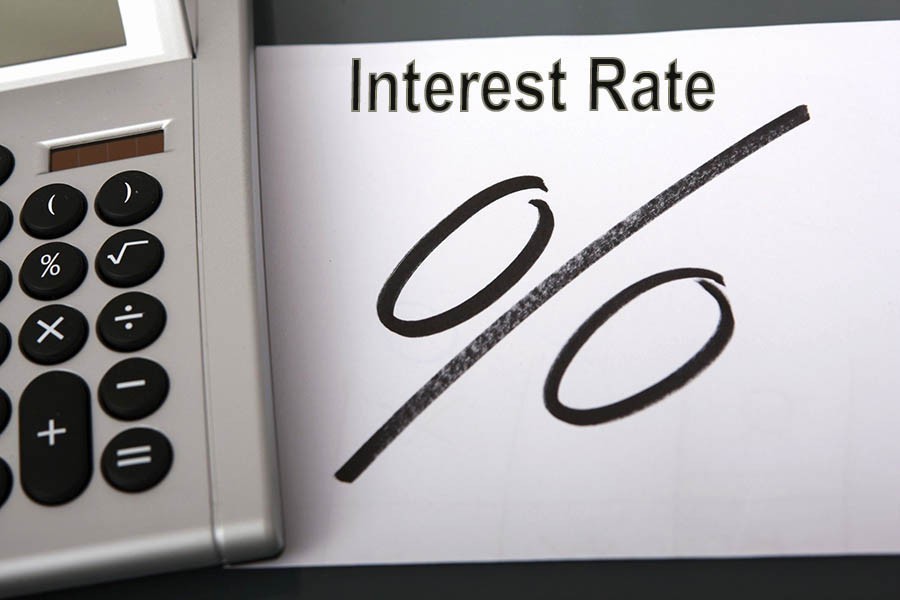
Published :
Updated :

The agreement reached between the finance minister and the banking sector leaders to lower the lending rate to the single digit from April 01 next, if implemented, would fulfil a long-standing demand of the businesses.
The private sector credit growth has been on a declining trend in the recent years and it has now plummeted to the lowest level since 2008. Following the rate cut, more and more people are likely to be interested in borrowing from banks, which is expected to spur private investment.
But, surprisingly, reactions to the latest development involving the bank interest cut have been rather subdued. The trade bodies should have come out with statements greeting the agreement reached between the bankers and the government on the lending rate cut. That has not happened. Only the Bangladesh Garments Manufacturers and Exporters Association (BGMEA) has demanded implementation of the proposed lending rate cut right now.
It could be that the businesses do still have doubt about the implementation of the proposed interest rates on both lending and deposits. For quite sometime, the government has been pressing hard the private sector banks to lower lending rates in keeping with the promise they had made while accepting the cut in corporate tax rate. But the latter could not enforce the single digit lending rate for factors, apparently, beyond their control.
Even if the single-digit lending rate is put into effect from April 01 next, any pick-up in private sector credit is very much unlikely. That is what many businesses and bankers think. Businesses do fear that banks might behave miserly in the disbursement of new loans.
Most banks, for a considerable period of time, have been maintaining a conservative approach to sanctioning new loans to the private sector. However, the demand for funds from the trading circle has also recorded a notable decline due to lesser external trading activities in recent months.
The banks are now found to be more comfortable with the investment in government securities. The government, too, apparently, has an insatiable appetite for funds. A notable decline in tax revenue earnings and in the sale of savings instruments has forced the government to take recourse to higher bank borrowing.
In the event of the cut in both lending and deposit rates to the single digit, the banks might be more interested in putting their funds in the safe and secure government securities.
Besides, depositors might be unwilling to keep money with banks at rates that would earn them no or negative returns. The rate of inflation is now higher than the maximum interest rate proposed for deposits.
So, the situation in the event of the implementation of the single digit rates for both lending and deposits remains, more or less, uncertain.
Indisputably with the present level of lending rates and other costs, it is very difficult for businesses to earn profit or remain competitive in the international market. But it is equally true that with a huge burden of non-performing loans, banks cannot afford lower lending rates. Nor will banks be able to attract too many deposits at lower rates of interests with inflation remaining at a high level.
True, some people would not mind keeping their money with banks at lower rates. But most of the small savers would think twice before doing that. The stock market is not an attractive place at the moment. But, though risky, there are some other avenues for investments. Savers might go for those. Besides, the size of the mattress money might grow even bigger following the deposit rate cut.
All these possible developments are not at all desirable in any economy.
So, since the single-digit lending rate would be applicable in the case of old loans as well as on new loans, there is every chance that old or existing borrowers, including the delinquent ones, would be benefited more than the new borrowers. However, this particular issue has not been adequately made clear by the central bank.
It is good that the government is serious about bringing down the cost of funds for the private sector operators. But the policymakers need to be even more serious about addressing yet another important issue--- the soaring non-performing loans in the banking sector. This particular problem has been eating into the vitals of the banks and creating all sorts of distortions in the country's financial sector.
Regulatory indulgence coupled with outside interference has given rise to a crisis situation in the financial sector. The problems of the industry have turned complex because of the deliberate lack of interest in addressing those. But any further delay would lead to further deterioration of the situation. Sooner the government does understand this unpalatable truth the better.
Only hard and painful reforms can put the banking industry on the right track. Resistance to such reforms would automatically come from all directions. If the government does decide to withstand those and move forward, only then there could be a turnaround. But what is important here is whether the government of the day is at all interested in getting the affairs of the banking sector streamlined or not.
zahidmar10@gmail.com


 For all latest news, follow The Financial Express Google News channel.
For all latest news, follow The Financial Express Google News channel.